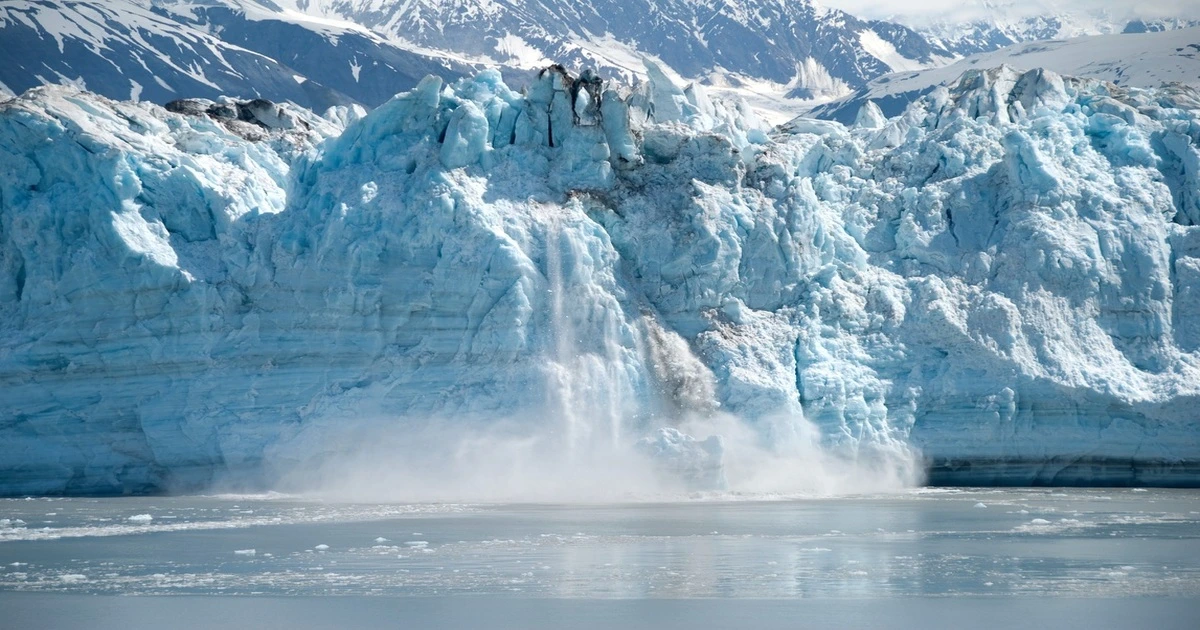representative image- pxhere.com
Last September, a natural disaster unlike any other rattled the Arctic region. What started as a melting glacier in Greenland escalated into a massive landslide, triggering a 650-foot-high mega-tsunami. But the most mysterious part? A low-frequency vibration that lasted for nine days, reverberating through the planet. Now, a study published in Science has provided answers and a stark warning about the rapidly changing Arctic landscape.
The Unprecedented Event: Glacier Melting, Landslide and Mega-Tsunami
The chain of events began in the remote region of eastern Greenland, specifically Dickson Fjord. As glaciers, including the one at the base of a towering 4,000-foot mountain, continued to melt due to rising global temperatures, the mountain became dangerously unstable. On September 16, 2023, the weakened slope gave way, sending a colossal amount of rock and debris crashing into the fjord below—enough material to fill 10,000 Olympic-sized swimming pools.
The impact triggered a mega-tsunami, one of the highest recorded in modern history, reaching heights of 650 feet. The wave, however, did not simply dissipate. Due to the fjord’s unique, narrow shape, the tsunami became trapped and began to oscillate back and forth—a phenomenon known as a “seiche.”
Seiches typically resemble the back-and-forth sloshing of water in a bathtub. This seiche, however, was different—it continued rhythmically for nine days, producing seismic energy that reverberated around the globe. The vibration reached as far as Antarctica within an hour, stunning seismologists worldwide.
The Mystery of the Nine-Day Seismic Signal
When seismologists first detected the vibrations, many thought their equipment had malfunctioned. Earthquakes are usually short-lived, lasting only minutes, but this signal persisted for nine days. It wasn’t the typical rumbling and high-pitched tones associated with seismic activity, but rather a monotonous hum that puzzled scientists.
A year-long investigation involving 68 scientists from 15 countries eventually traced the signal back to the mega-tsunami in Greenland. The seiche, trapped in the narrow fjord, had generated seismic waves strong enough to shake the Earth’s crust.
This discovery is particularly significant because it marks one of the first times scientists have directly observed the influence of climate change on geological events. The landslide, tsunami, and subsequent seiche were all triggered by the rapid melting of glaciers—a direct result of human-induced climate change.
Climate Change’s Role in Cascading Hazards
Svennevig, a geologist who worked on the study, referred to this event as a “cascading hazard”—a series of interconnected disasters that begin with one trigger. In this case, it all started with the accelerated melting of Greenland’s glaciers due to climate change. As the Arctic region warms at four times the global average, its landscape is becoming increasingly unstable.
Scientists fear that as temperatures continue to rise, these types of cascading hazards could become more frequent. Landslide-triggered mega-tsunamis, which have already devastated parts of Greenland in the past, may start occurring in other regions with similar geographies, such as Alaska, Norway, and parts of Canada.
A Global Warning: Uncharted Waters for the Arctic
The Greenland landslide and mega-tsunami are not just isolated events. They signal a broader destabilization of mountain slopes and frozen ground in the Arctic. Recent rock avalanches across the Arctic and Alpine regions serve as further warnings of this trend. As climate change pushes the Arctic into “uncharted waters,” scientists are beginning to realize that natural phenomena, like seiches, may behave in ways they previously thought impossible.
One thing is clear: the rapid warming of the Arctic is reshaping the environment in unexpected and dangerous ways, creating new threats that may put human lives and livelihoods at risk.
FAQ About the Greenland Landslide Mega-Tsunami
What caused the Greenland mega-tsunami?
The mega-tsunami was triggered by a massive landslide in Dickson Fjord, Greenland, in September 2023. The landslide was caused by the melting of a glacier at the base of a 4,000-foot mountain, destabilizing the slope and sending rocks and debris into the water.
How high was the Greenland mega-tsunami?
The tsunami reached a height of 650 feet, making it one of the highest recorded in modern history.
What is a seiche, and how did it affect the mega-tsunami?
A seiche is the rhythmic back-and-forth movement of water in an enclosed space, like a fjord or a bathtub. In this case, the tsunami wave became trapped in the narrow fjord and oscillated back and forth for nine days, generating seismic waves that shook the Earth’s crust.
Did anyone get hurt in the tsunami?
Fortunately, no one was injured in the tsunami. However, it did destroy centuries-old cultural heritage sites and damaged an empty military base in the area.
Could this happen again?
As the Arctic continues to warm at an accelerated pace due to climate change, scientists warn that landslide-triggered mega-tsunamis could become more frequent, not just in Greenland but in other regions like Alaska and Norway.
